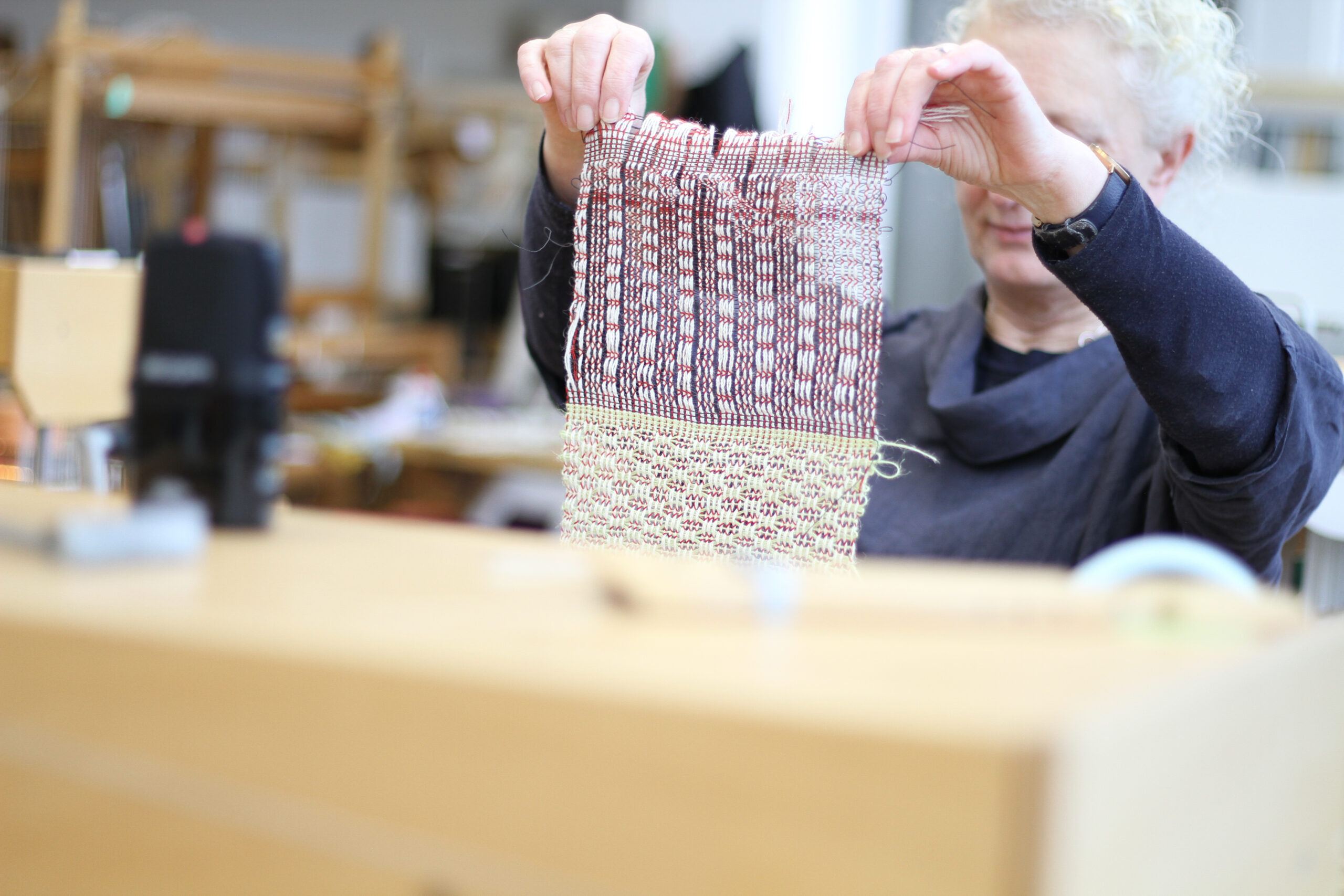Info
The residency was held at Design School Kolding in the Textile Department, will you tell us about hosting the residency? What was the residency about?
In this residency, three master practitioners in weaving gathered to explore Leno Weaving together with me. All of us were to study and experiment within this weaving technique. So, one part of the residency was about learning more of an – for us, unexplored weaving technique. Another part focused more on the actual meeting and sharing of experience. We went through different activities and textile design methods to align ideas and approaches to enter into experimentation with Leno weaving. The methods included different phases of design development. In phase one we used methods such as co-creating sources of inspiration and development of mood boards based on images, colours, and materials. These were developed as boards to communicate throughout a joined design process. As a part of this process, we also dived further into experiences with materials and fibres to surge for yarns suited for weaving with the Leno weaving technique. Also, the spinning and plying of yarns were discussed in connection with textile expressions and functions.
The second phase of the residency focused on setting up the loom for Leno Weaving. This means understanding the different components when working with a high level of technical parameters for weaving. One thing was getting a common understanding of Weave Point, a software for computer-controlled arm looms. This introduction was built around a specific set-up to understand the software and what is possible to do working with it. Here I have, beforehand, made a selection of bindings to narrow the scope of actions. Within this selection, we could explore the bindings and play with possibilities. Another thing about setting up the loom is the practical skills and experience of preparing the loom with the chosen material in combination with the binding. In pairs of two, we prepared a loom for each of us. And in this way assisting each other in the different steps of action.
The second phase also involved the weaving theory behind the Leno Weaving technique aiming to build an understanding of how to think of the given parameters. The introduction to the basic approaches of the techniques led to the first exercises of trying them on the loom. Onwards the third phase focused more on exploring the complexity of the Leno Weaving technique. Along with this process, we joined each day to show each other the samples and experiments we did to analyse which materials and applications of the technique to be explored further.
Concluding our work and experimentation we made a selection of samples to be presented at the ChaftHub Exhibition. These Leno Weaving samples were displayed on three boards, each showing three to five samples within different series of experiments. This was a great exercise as well – to communicate about the exploration that we did together.
What was the learning of facilitating the residency within your textile design practice?
Since all of us were experienced weavers, we were familiar with the more common methods, bindings, yarns, and fibres when weaving, my and our greatest learning centred more around the exploration of a new technique together with fellow weavers. It gave me a renewed curiosity on my own field that has inspired me – in the preparation that I did before the residency and in my work afterwards. A concrete example is how my inspiration and curiosity also influenced the students working side by side while the residency lasted. They became curious as well. And when the residency ended and there was still more warp on the loom, some of the students tried out the Leno weaving technique as well. So, my experience with running the residency and being a part of it exceeded above my expectations. I could not have foreseen the many great experiences that have come out of these two weeks of residency at Design School Kolding.






